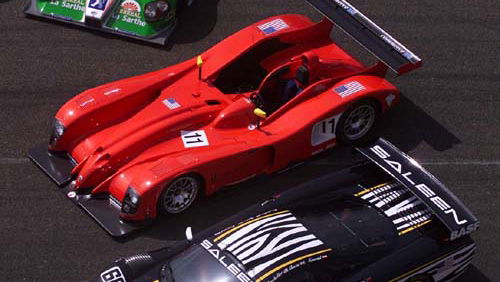Teams and cars under scrutiny.
If you want to compete in the world's greatest sportscar race, you first have to acquire one of the extremely rare world's greatest sportscar race certificates of eligibility....
For the 48 cars present at the Circuit de la Sarthe this weekend, an invitation to race in the Le Mans 24 Hours is simply not enough to guarantee a place on the grid. Yes, they may all have taken part in the official pre-event practice session - although in some cases, taking part amounted to a couple of laps - but, without that piece of paperwork, nothing moves this week.

If you want to compete in the world's greatest sportscar race, you first have to acquire one of the extremely rare world's greatest sportscar race certificates of eligibility....
For the 48 cars present at the Circuit de la Sarthe this weekend, an invitation to race in the Le Mans 24 Hours is simply not enough to guarantee a place on the grid. Yes, they may all have taken part in the official pre-event practice session - although in some cases, taking part amounted to a couple of laps - but, without that piece of paperwork, nothing moves this week.
Qualifying for the 24 Hours takes place in the twilight hours of Wednesday and Thursday, but the week actually begins on Monday with official scrutineering in the centre of the historic city. The Place des Jacobins is set aside for the process of checking and re-checking the machines entered by the 48 hopefuls, decked out with a series of tents for the purpose of determining eligibility in several key areas.
Such is the entry to the event that scrutineering takes place over the two full days preceding qualifying, with half the field rolling their cars into the town square on Monday, and the other half on Tuesday.
Rolling is the operative word here, for there must be nary a drop of fuel in any machine for it to pass the first test of the day. With their tanks dry, the cars are then hawked around the various scrutineering stations to ensure they measure up, weigh in and comply with the various pre-race regulations.
No-one and nothing is allowed into the area without the right identification and, while this isn't security on Formula One standards, the old rule still applies: if you don't have a pass, you're not coming in... For those with the right accreditation, however, the first hurdle has already been overcome...
From then on, it is a case of keeping fingers crossed that all the pre-trip engineering, checking, building, checking, measuring, remeasuring, checking and rechecking has been accurate, and that the cars fit the bill for the most prestigious race on the sportscar calendar.
Inside and outside dimensions are checked thoroughly to ensure that the cars meet the requirements for their relative classes, that there are no hidden advantages tucked away in the design that should not be there, and that the necessary equipment is all in place and in full working order.
This last point is particularly important given the dangerous nature of the game in which the cars will compete. Just like any other form of motorsport, all the pre-race paperwork states that the organisers will take reasonable precautions to prevent, but no liability for, loss or injury - although a full check of safety equipment still forms part of the scrutineering check.
As a result, roll hoops, safety structures, fire extinguishers and driver restraints are all fully examined, and the teams must be in possession of a certificate from the car builders to prove that their machine undergone the mandatory crash test.
Only after all this has been checked will the car get its conformity sticker - and entry to the race itself. Whilst the drivers still have their hard work to come, this first stage is a marathon in itself for the engineers who have to do it all again throughout the rest of the week...